Ally Dockery, Sarah Fortunati, Joseph Hendry, Todd Messick, Luke Montrose
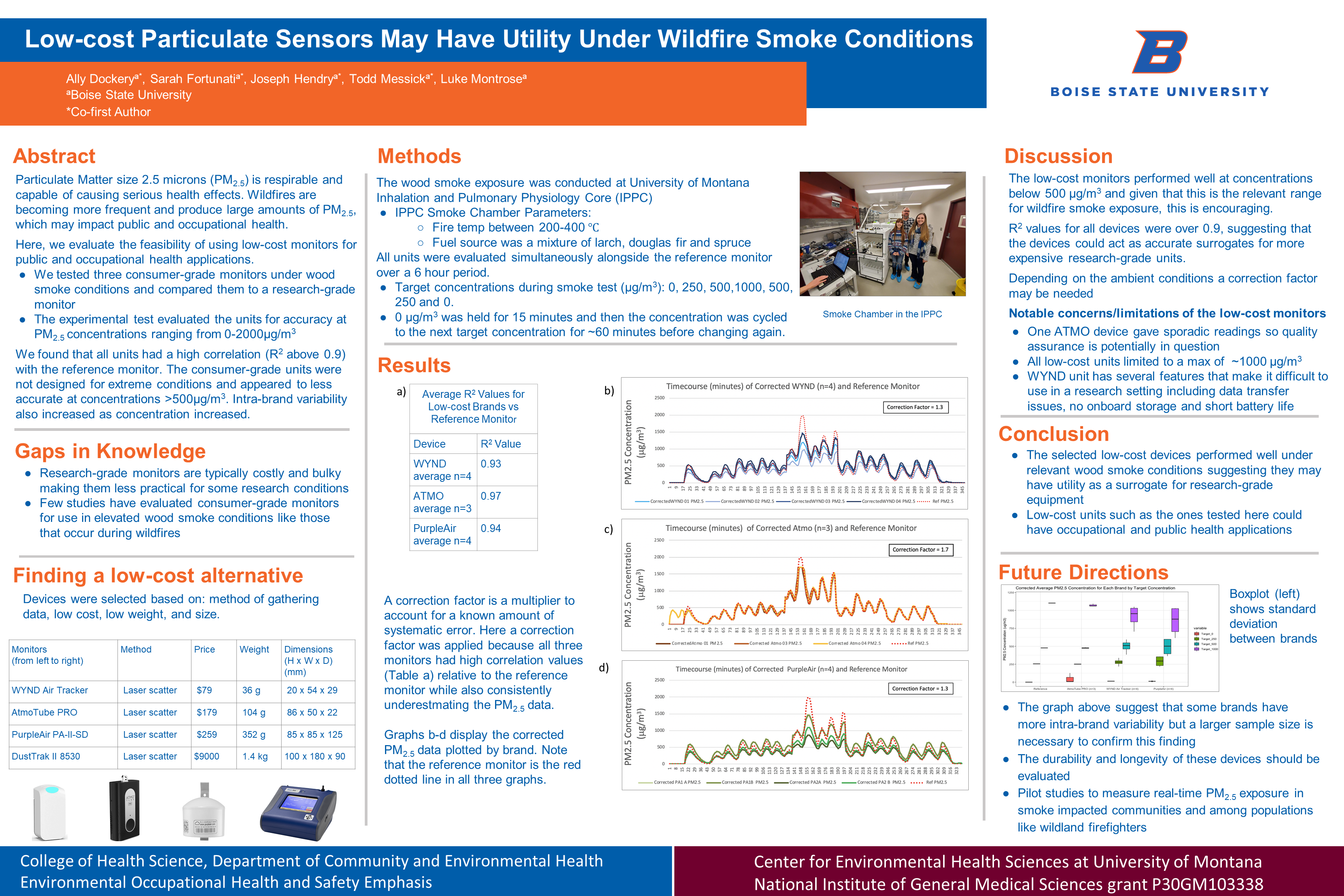
Abstract
Particulate Matter size 2.5 microns (PM2.5) is respirable and capable of causing serious health effects. Wildfires are becoming more frequent and produce large amounts of PM2.5, which may impact public and occupational health.
Here, we evaluate the feasibility of using low-cost monitors for public and occupational health applications.
- We tested three consumer-grade monitors under wood smoke conditions and compared them to a research-grade monitor
- The experimental test evaluated the units for accuracy at PM2.5 concentrations ranging from 0-2000μg/m3
We found that all units had a high correlation (R2 above 0.9) with the reference monitor. The consumer-grade units were not designed for extreme conditions and appeared to less accurate at concentrations >500μg/m3. Intra-brand variability also increased as concentration increased
Gaps in Knowledge
- Research-grade monitors are typically costly and bulky making them less practical for some research conditions
- Few studies have evaluated consumer-grade monitors for use in elevated wood smoke conditions like those that occur during wildfires
Finding a low-cost alternative
Devices were selected based on: method of gathering data, low cost, low weight, and size.

| Monitors (from left to right) | Method | Price | Weight | Dimensions (H x W x D) (mm) |
|---|---|---|---|---|
| WYND Air Tracker | Laser scatter | $79 | 36 g | 20 x 54 x 29 |
| AtmoTube PRO | Laser scatter | $179 | 104 g | 86 x 50 x 22 |
| PurpleAir PA-II-SD | Laser scatter | $259 | 352 g | 85 x 85 x 125 |
| DustTrak II 8530 | Laser scatter | $9,000 | 1.4 kg | 100 x 180 x 90 |
Methods
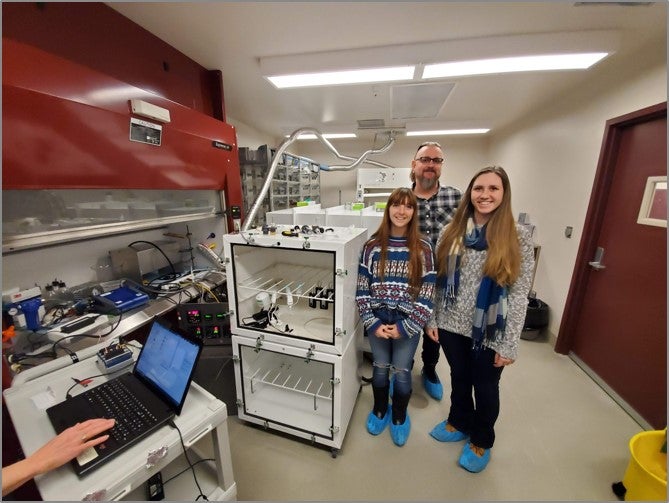
The wood smoke exposure was conducted at University of Montana Inhalation and Pulmonary Physiology Core (IPPC)
IPPC Smoke Chamber Parameters:
- Fire temp between 200-400 ℃
- Fuel source was a mixture of larch, douglas fir and spruce
All units were evaluated simultaneously alongside the reference monitor over a 6 hour period.
- Target concentrations during smoke test (μg/m3): 0, 250, 500,1000, 500, 250 and 0.
- 0 μg/m3 was held for 15 minutes and then the concentration was cycled to the next target concentration for ~60 minutes before changing again.
Results
A correction factor is a multiplier to account for a known amount of systematic error. Here a correction factor was applied because all three monitors had high correlation values (Table a) relative to the reference monitor while also consistently underestmating the PM2.5 data.
Table a
| Device | R2 Value |
|---|---|
| WYND average n=4 | 0.93 |
| ATMO average n=3 | 0.97 |
| PurpleAir average n=4 | 0.94 |
Graph b-d
Graphs b-d display the corrected PM2.5 data plotted by brand. Note that the reference monitor is the red dotted line in all three graphs
Graph b
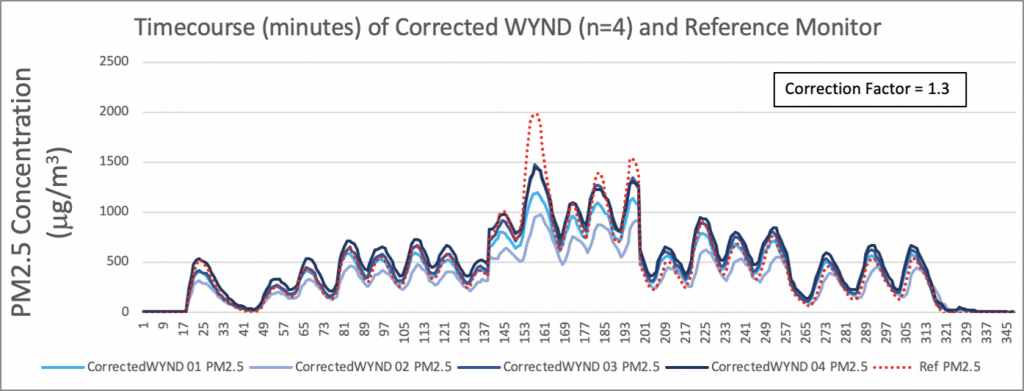
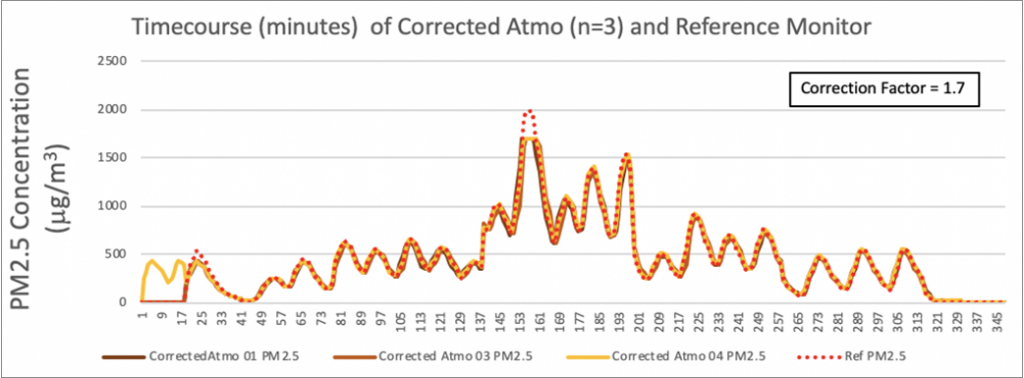
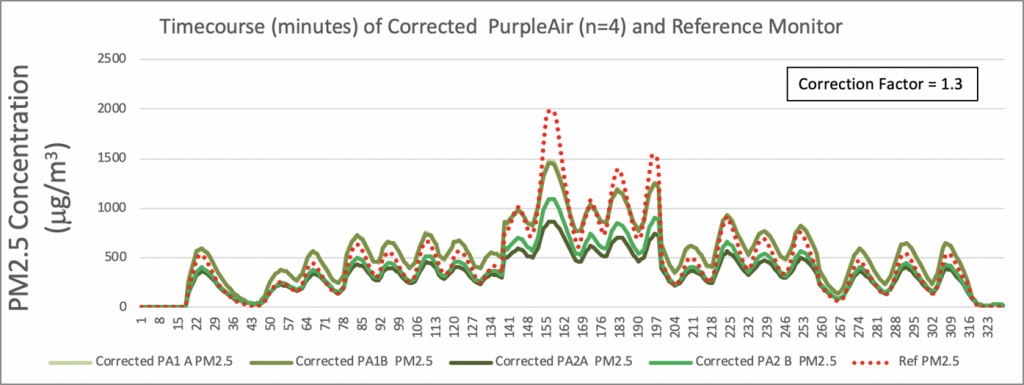
Discussion
The low-cost monitors performed well at concentrations below 500 μg/m3 and given that this is the relevant range for wildfire smoke exposure, this is encouraging.
R2 values for all devices were over 0.9, suggesting that the devices could act as accurate surrogates for more expensive research-grade units.
Depending on the ambient conditions a correction factor may be needed
Notable concerns/limitations of the low-cost monitors
- One ATMO device gave sporadic readings so quality assurance is potentially in question
- All low-cost units limited to a max of ~1000 μg/m3
- WYND unit has several features that make it difficult to use in a research setting including data transfer issues, no onboard storage and short battery life
Conclusion
- The selected low-cost devices performed well under relevant wood smoke conditions suggesting they may have utility as a surrogate for research-grade equipment
- Low-cost units such as the ones tested here could have occupational and public health applications
Future Direction
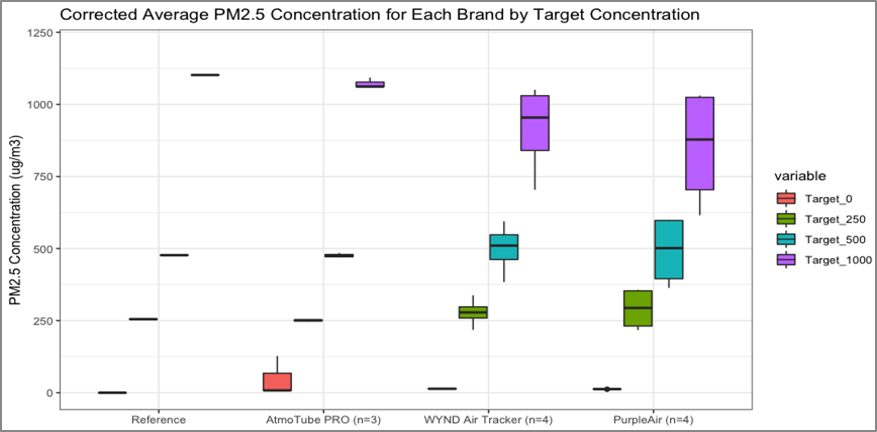
- The graph above suggest that some brands have more intra-brand variability but a larger sample size is necessary to confirm this finding
- The durability and longevity of these devices should be evaluated
- Pilot studies to measure real-time PM2.5 exposure in smoke impacted communities and among populations like wildland firefighters
Additional Information
For questions or comments about this research contact, Sarah Fortunati at sarahfortunati@u.boisestate.edu